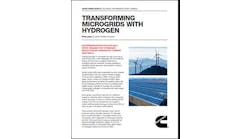2019 Looks Good for Electric Vehicles as New York Pushes Electrification of Transportation
New York continues to push electrification of transportation, boosting what’s expected to be a record 2019 for electric vehicles in North America.
As part of its EVolve NY program, the New York Power Authority (NYPA) is rolling out 200 direct current fast chargers (150 kW), which charge in as little as 20 minutes. NYPA will install the fast chargers at two dozen sites, including five cities, major traffic corridors and the John F. Kennedy International Airport, where a microgrid is in development (See New York Department of Public Service Case 17-E-0708.)
In all, the state plans to create 10,000 electric vehicle charging stations by the end of 2021.
As another incentive to encourage electric vehicle use, the state Public Service Commission has instituted time-of-use rates that will apply to residential customers as they charge their vehicles. Customers can access power at market rates, meaning they can choose to charge their cars when prices dip because power demand is low, such as at night.
New York also has put rebate programs in place for the purchase and lease of hybrid and electric vehicles. And in September the state made $5 million available for installing chargers at apartment buildings, workplaces, malls and other locations under Charge Ready NY. New Yorkers can combine the rebates with the state’s 50 percent tax credit when installing charging stations.
The programs are expected to boost electric vehicle adoption in New York, which along with California and a few other states, lead the way in producing what looks to be tremendous electric vehicle growth next year. A new report by Navigant Research forecasts that 2019 will bring an 80 percent increase in North American sales from 2017. (Both states also are leaders in advanced microgrids, which increasingly incorporate electric vehicle charging stations.)
The report, which focuses on light duty (LD) plug-in electric vehicles (PEV), says that growth is being spurred by a variety of factors, among them lower vehicle costs, new business models (such as car sharing), automated vehicles, and government incentives and policies.
“Many US states with ZEV [zero emission vehicle] policies continue to boast the largest PEV populations and highest sales numbers, such as California and New York, but states like Florida and Colorado are coming to the forefront of the PEV game,” said Raquel Soat, research analyst with Navigant Research. “To meet emissions targets and climate-related goals, many groups across North America are pushing state legislators to pass ZEV policies to increase model availability and incentivize higher LD PEV adoption rates.”
Track news about electrification of transportation. Subscribe to the free Microgrid Knowledge Newsletter.







